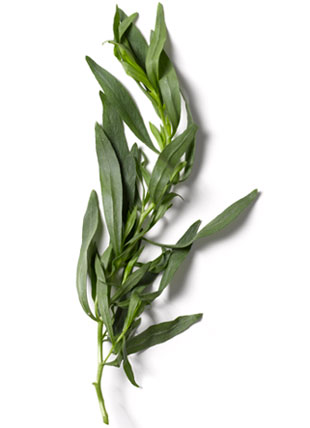Tarragon or dragon's-wort (Artemisia dracunculus) is a perennial herb in the family Asteraceae related to wormwood. Corresponding to its species name, a common term for the plant is "dragon herb." It is native to a wide area of the Northern Hemisphere from easternmost Europe across central and eastern Asia to India, western North America, and south to northern Mexico. The North American populations may, however, be naturalised from early human introduction.
Tarragon grows to 120-150 cm tall, with slender branched stems. The leaves are lanceolate, 2-8 cm long and 2-10 mm broad, glossy green, with an entire margin. The flowers are produced in small capitulae 2-4 mm diameter, each capitulum containing up to 40 yellow or greenish-yellow florets. (French tarragon, however, seldom produces flowers
Usage
Tarragon is used to flavor a popular carbonated soft drink in the countries of Azerbaijan, Armenia, Georgia and, by extension, Russia and Ukraine. The drink—named Tarhun , pronounced [tarˈxuːn]; Тархун), is made out of sugary tarragon concentrate and colored bright green.
Cis-Pellitorin, an isobutylamide eliciting a pungent taste, has been isolated from Tarragon plant
In Slovenia, tarragon is used as a spice for sweet pastry called potica.
Cultivation
![]() Copyright(C) 2007
- 2020. All rights reserved.
Copyright(C) 2007
- 2020. All rights reserved.
